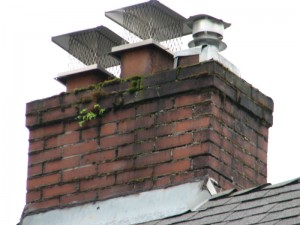The Importance of a Chimney Cap
The official start of winter is just a few days off, which means homeowners everywhere are lighting up their fireplaces and wood stoves to keep warm. The privilege of having a fireplace in the home includes cozy evenings curled up on the couch and creating the perfect holiday backdrop. However, having a fireplace also comes with a certain set of responsibilities for keeping it safe and functional. Most homeowners know the basic rule of having the chimney swept and inspected every year, but the knowledge usually stops there. The details about the fireplace and chimney often go unnoticed. One aspect of the chimney that often gets forgotten is the chimney cap.
The chimney cap provides protection in surprising, cost-effective ways, in spite of its basic structure. Generally built with stainless steel or copper materials, the chimney cap guards the inside of the chimney from where it sits at the very top. A key function of the chimney cap is to stop critters from making a home of the chimney. With colder weather upon them, the animals that stick around for winter become very intent on finding a warm home out of the elements. Unfortunately, the warm chimney makes a pretty attractive home for little animals that do not know any better, and an uncapped chimney could end up blocked by a nest. With an obstruction like this, the fumes from the next fire cannot properly vent from the home. They start to back up into the living air, putting inhabitants at risk of carbon monoxide poisoning and other harmful inhalations.
Chimney caps also act as an umbrella for the chimney by preventing water from freely pouring down the inside. If water is allowed to enter the chimney, it can leave some serious damage it its wake. First, the metal flue liner starts to rust, which exposes the interior of the chimney and the home to the acidic smoke and heat from the fire. Next, the water trickles down to the damper and rusts that out too. A rusted damper could prevent the fireplace from venting properly. Water damage may also show up inside the home, as evidenced by water stains on the walls and ceiling around the fireplace.
Luckily, by investing in the installation of a chimney cap, you can completely avoid expensive problems like this. Ask your chimney specialist if your home needs a new chimney cap. Your current chimney cap may be outdated or damaged, or it may be completely missing! Either way, a chimney specialist can safely determine this for you and help you choose the right new chimney cap. If you live in the Suffolk County area of Hudson Valley, contact Chief Chimney Services, Inc. for a professional consultation.

